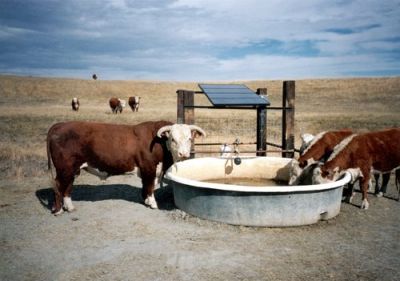The Lone-Star State should take a deeper look at the sun
 Texas is facing an energy problem, not enough reserves of electric generation capacity. In a report conducted by The Brattle Group for the Electric Reliability Council of Texas, the group found that the Lone-Star State could run out of generating capacity to meet its peak demand in a few years. A subsequent report by the group conducted on behalf of the Solar Energy Industries Association (SEIA) and the Energy Foundation found that solar could help meet that demand while lowering prices over prices ratepayers paid last year for electricity during the boiling Texas summer.
Texas is facing an energy problem, not enough reserves of electric generation capacity. In a report conducted by The Brattle Group for the Electric Reliability Council of Texas, the group found that the Lone-Star State could run out of generating capacity to meet its peak demand in a few years. A subsequent report by the group conducted on behalf of the Solar Energy Industries Association (SEIA) and the Energy Foundation found that solar could help meet that demand while lowering prices over prices ratepayers paid last year for electricity during the boiling Texas summer.
Texas has a long and short term problem. Predominantly the focus is on lacking reserve margin in Texas,” said SEIA Vice President of State Affairs Carrie Cullen Hitt. “ERCOT predicts that reserve is at 13.75 percent and it's predicted to decline over the next few years, really indicating a crisis level once you get past 2013, 2014, 2015,” she said. That’s when Texans can expect rolling blackouts and brownouts unless something’s done about it now.
So what’s a big ‘ole state to do? Attract more power production. But Texas’ wholesale prices are low and with lower natural gas and other fuel prices—for now—the idea of building additional large fossil fuel plants may be less palatable. Here’s where solar can play a key role and help reduce electric prices as well.
The study by Brattle, which looked at energy prices during June 2011 through August 2011, found that during that period solar could lower the cost of wholesale generation in the state. “We concluded that per megawatt hour of solar generation and specifically for the period of June 2011 and August 2011 each megawatt hour of solar PV might have saved customers between $216 and $343 per MWh. This includes an assumed $15 per ton price of CO2 emissions,” said Brattle Principal Jürgen Weiss, Ph.D., lead author of the report, “The Potential Impact of Solar PV on Electricity Markets in Texas.”
The narrowly focussed report found that the value of each megawatt hour declines as more PV is added in, but those megawatts also lead to an increase of savings. The report also didn’t look at the capital costs of installing solar, Weiss said. Still, “It is broadly in line with what people estimates the cost to put in PV might be. The overall finding here is at least for the period of the summer of 2011 solar PV may well have provided the cost-effective alternative to other options to increase the capacity of the system.”
Since could help reduce costs of buying from other generating sources, the report concludes. But, “Unless you solve ERCOT's entire capacity problem by putting in solar, there is a question of how high prices need to be to attract other generators to come back on line,” Weiss said. “It could be that the lower prices with PV over time will prove sufficient for new capacity added to the market. But if the wholesale prices are too low to attract new fossil fuel generators, in this hypothetical case, if you install solar prices would also likely move down.”



